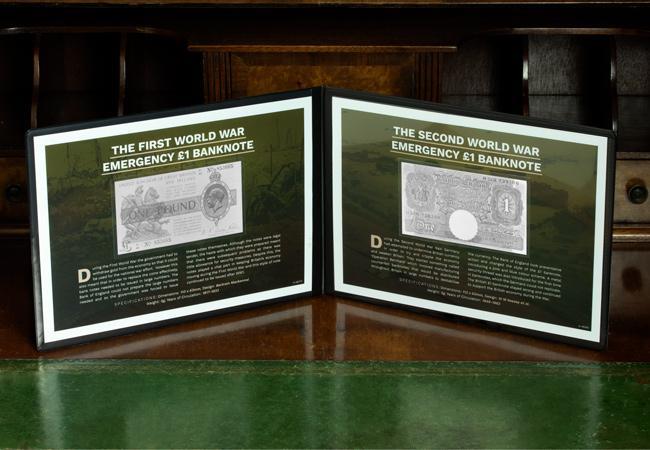Posts Tagged ‘old banknote’
The British banknote set to sell for up to £12,000!
Tomorrow on 28th October a Victorian £5 Banknote is set to sell at auction catalogued at up to £12,000! Now you might be wondering how an old piece of paper could be worth such an extortionate price. Well, even though it is over 150 years old, the banknote is in pristine condition – almost as if it has come straight from the Victorian Cashier who issued it himself!
The £5 Banknote, dated for the 28th December 1863 is a representation of the height of the industrial period and the advances made in Victorian Britain. In fact the design and printing technology was so advanced that the exact design was used up until 1956! You see, British Banknotes have an incredible history that is often overlooked in the collecting world…
The First UK Banknote
In 1694 King William III was at war with France, and as is often the case with warfare, the financial state of the nation was put under pressure. And so the Bank of England was established. One of its main jobs was to issue banknotes in return for deposits of gold or silver. It’s thought that the first banknote ever issued was one for £1000! But seeing as most people’s wages were less than £20 a year in those days, most people never saw a banknote.
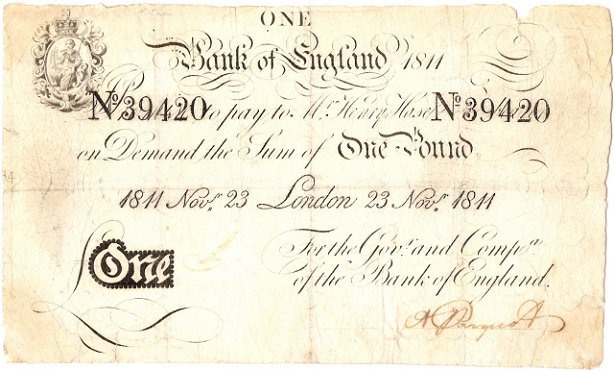
Each banknote was handwritten on bank paper addressed to the payee, and signed by a cashier to authenticate it –sort of like a modern day cheque. This is a tradition that continues today as each banknote is issued with the Chief Cashier’s signature.
“I promise to pay the barer on demand the sum of five pounds”
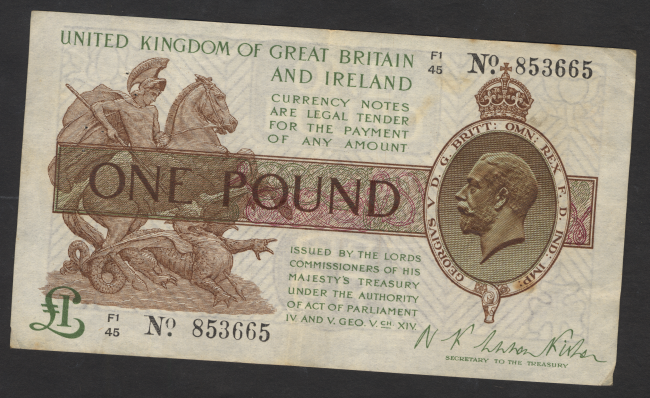
Before 1853 banknotes were completely handwritten, but the innovation of the Victorian period meant that templates for banknotes could be printed. Therefore cashiers no longer had to sign each note individually. The words “I promise to pay the bearer on demand the sum of Five pounds” were introduced to link the notes to a physical gold value. In theory, anyone could go to the bank and ask them to give them £5 worth of gold in exchange for a £5 banknote, although the meaning has changed today, the tradition remains on the banknotes.
Emergency Wartime issues
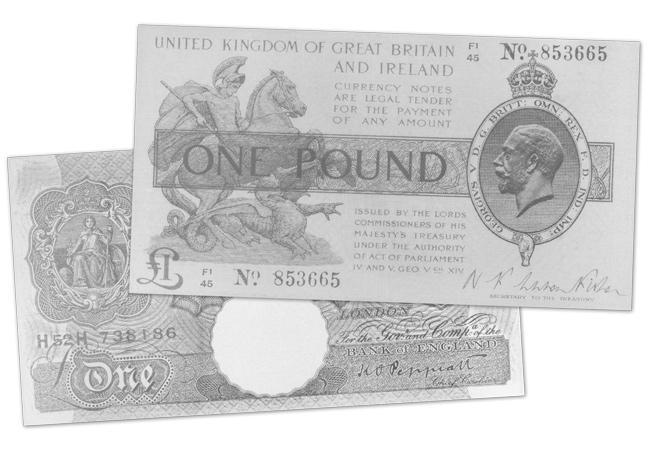
During the First World War, gold was preserved by the government and gold coins in circulation had to be withdrawn. To replace these coins, the Bank of England needed to make a large supply of £1 and 10/- notes available, but the haste at which these were produced meant that there were huge security problems. The notes were too small for cashiers to handle and they had very few anti-counterfeiting measures, but the notes themselves played a vital role in keeping the economy going.
The Second World War Nazi threat

During World War Two, the British government found out about a Nazi plot to introduced thousands of fake banknotes to destabilise British currency. However the Bank of England took emergency action and changed the colour of some of the notes for the duration of the war. The Nazi’s could not match the high levels of security features on the British banknotes and their plans failed.
Polymer banknotes
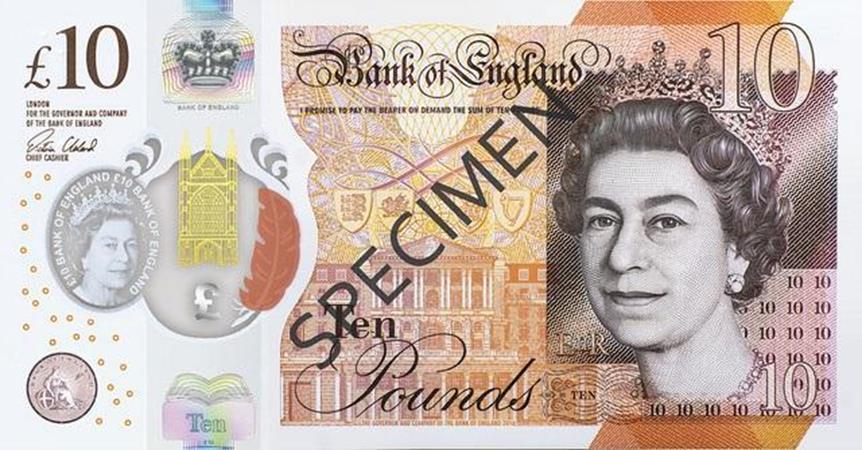
Today historic banknotes are harder and harder to get hold of, especially the ones in good condition, and those that are will often sell for thousands of pounds. Few have seen the earlier banknotes, and a small number of us remember using pre-decimal or war time banknotes in our childhoods. This is largely because the paper design which made them more susceptible to damage, so many have been lost over time. The new polymer banknotes first issued in 2016 marked a monumental change in numismatic history, bringing new technology and innovation to our pockets.
If you’re interested
Today you have the chance to own a limited edition pair of Emergency Wartime Banknote reproductions, each struck from 5g of FINE SILVER.
The Emergency Banknotes each carry a fascinating story, and your Silver versions come complete in a presentation folder telling the full story of how these banknotes helped Britain win the war.
JUST 100 of these special FINE SILVER banknotes pairs are available, so click here to order yours now, before it’s too late >>
The new face of the £20 banknote has been announced.
The Bank of England recently revealed the face of the new £20 note…
In 2007 a new-style £20 note was introduced, featuring one of the father’s of modern economics, Adam Smith. New security features were added, including a holographic strip, enhanced watermark and ultra-violet features.
However, almost 10 years later The Bank of England has announced an update to the note, with a new design scheduled for 2020.
Meet the new £20 note character: JMW Turner
— Bank of England (@bankofengland) April 22, 2016
Find out more: https://t.co/CsMLVfc9DJ#turner #jmwturner #20poundnote pic.twitter.com/5quxL5SnJz
For the first time ever, The Bank of England asked the British public to nominate people of ‘historical significance‘ from a list of 590 eligible candidates. The candidates, from the world of visual arts, included Alfred Hitchcock, Isambard Kingdom Brunel, Richard Attenborough, Beatrix Potter and William Blake to name just a few.
Once the nominations were in, an appointed committee, with input from public focus groups, produced a shortlist of five candidates – artist JMW Turner, designer Josiah Wedgwood, filmmaker Charlie Chaplin, sculptor Barbara Hepworth and painter William Hogarth.
The final decision was made by the Bank’s governor, Mark Carney, and it has now been revealed that a self-portrait of Joseph Mallord William Turner will replace famous economist and philosopher Adam Smith on the new banknote.
Also featured alongside the self-portrait will be ‘The Fighting Temeraire‘ which was painted by Turner in 1839 and is currently on display in the National Gallery.
Turner’s selection represents the first time that the Bank of England has turned to the British public to assist in the selection process. However, it isn’t just the design that’s changing, the note itself will become the third banknote to be made from Polymer – which are more secure, cleaner, durable and environmentally friendly compared to the existing paper notes.
You won’t have to wait until 2020 to see your first polymer UK banknote though, with the new polymer £5 note, featuring Winston Churchill, due to enter circulation September 2016.
Own Britain’s most famous banknote – issued in fine silver.
British banknotes have undergone many changes since their initial introduction in 1697, from the printing techniques and watermarks to the introduction of colour in 1957.
We have a small stock of Britain’s most famous banknote – the ‘White Fiver’ available, which has been issued in Fine Silver.
You can add one to your collection today.

